We left for Ypres after a nice breakfast with Bert. We had talked with him about renovations as he had had the kitchen area redone a couple of years ago and was pleased he had paid the extra to have a very good project manager who was 'as young as we are". I am envious of his coffee machine which he had bought on the internet at a very good price.
At Ypres we went to the Information Centre and picked up a self drive tour of Flanders Fields for 3 euro
. It proved to be excellent as it gave us extra information about the sites and also allowed us to skip some which were of less interest to us. There was also a market on in the square so we could get food to carry for lunch.
We first went to Essex Farm Cemetery, with the memorial to the West Riding Division but also with one renovated dugout. This is because the site was also an important dressing or first aid station where the famous Flanders Fields poem was written. If I had checked the GPS I would also have known this as later I found there was a cache there that also gave me all the information about the person who wrote the poem. It was a Canadian doctor, John McCrae, at the time a Lieutenant and later a Colonel who died in 1918. He was annoyed to be taken from his role as a gunner to join the medical forces.
We followed the canal, which was the front line for 2 years then on to see the Canadian memorial. This commemorates the 3000 who died in one of the first gas attacks. It was erected in 1921 but still looks very modern with a head and upper body of a soldier merging into a huge column.
We then went to the New British cemetery with a number of NZ graves. We then saw the NZ memorial nearby and then went on to Tyne Cot cemetery. It is the biggest military cemetery on the continent, with 11,956 soldiers buried here
. Most of the NZ dead from Passendale are here.
We went first to the information centre which has only been open since 2007. As we looked around the names and ages of the dead were slowly read out over a loud speaker and their picture was shown on a screen. The displays are mainly of donated items from a small number of the soldiers of different regiments. There were form letters to families saying a soldier was missing or killed in action as well as a number of more personal ones. The photo of a NZ soldier had 3 NZ coins around it that had been dropped in through a gap in the glass. A later section said that no NZ headstones had epitaphs. The back wall has a list of 34,957 missing soldiers including most of the NZ missing.
The Information Centre told us about the building of the walls of the cemetery with the Cross of Sacrifice that all cemeteries have, made with a brass sword and the big stone altar with words by Rudyard Kipling "Their name liveth for ever more”. The site of the cross was built around what was originally a German bunker that had been taken by the Australians in 1917. As the policy was to bury the dead as close as possible to where they died a small cemetery grew up here and this was the basis for this huge cemetery. The names on the headstones usually face the cross or the altar. Tyne Cot was named after a barn the soldiers had nicknamed Tyne cottage that was later used as a dressing station
. There are 4 German graves in this cemetery as well and the 2 we saw both had poppies on them.
Back at Ypres we found a park and stopped to see the Menin Gate which we had driven through when we first arrived. It is staggering to see all the names. You are first aware of the lists by regiment under the arch then realise the side aisles have even more. The Australian names are mainly remembered there. There was an itinerary for the ceremonies this month with Australia mentioned on it. We met a number of Australians during the day and realised there was a tour group and other individuals there for a memorial.
Our next stop was for John to have a break at the rebuilt town of Witjschate. It was completely rebuilt after WW1 although the church looks much older. We had hoped to find a coffee but the only sign of life was in the square where marquees were being set up. We ended up having nice coffee and tarts at Kemmel – the distances are so small it was only 5 minutes away
. This was near the site where 19 mines were exploded by the British in 1917 (and the explosion was heard in London!) and we tried unsuccessfully to find the site of the largest crater which is now a pond known as the Pond of Peace.
Instead we arrived at Messines Ridge with the memorial of the Missing recording the names of the 839 missing NZ soldiers from the battle. This is a smaller cemetery with ‘only' 1503 graves, 540 identified. We then went into Messine and saw the market square. There is a museum there as well as one in Ypres but we decided to backtrack and see the Passendale museum in a town nearby.
According to our book it was meant to close at 6pm, however when we arrived just before 5pm we found our booklet was out of date and it was about to close. A couple from Australia had arrived at the same time. We were very lucky though as the woman at the ticket office told we could go in if we were quick and could finish by 5
.30pm and she would stay until then because we had “come so far”. Knowing we only had a small amount of time meant we didn’t linger as we usually would but concentrated on the battles the NZ were more involved in. The museum had well set out information of the 5 major battles. The NZ and Australian forces were identified but shown with the union jack on the maps. The Australian couple had the dates two relatives had die so concentrated on those dates.
The museum also had a recreated dugout below and this was also well worth the visit. It did not have the smell we were told would have been there but the idea of an underground town in cramped conditions was clear.
The next objective was to get fuel then visit a German site which also had a cache. However we ran into problems as the station had only a card payment and our card was temporarily refused - three times! So we drove to another station to get the same message. We were on our way to a third and were going to go back to Bruges if this gave problems, when we ran into road works and had to navigate around them
. At this stage I saw a woman outside her house so went and asked her where the nearest fuel station would be that would have a person so we could pay cash if necessary. She thought for a while then got a map. In the end she (Inge) said she would come with us if we promised to bring her home. She even brought her own credit card and said we could pay her back. Luckily the station had a person and we could pay them. The woman at the station told me that visa is not always accepted outside but inside the station is OK?? We gratefully returned Inge to her home.
After tea we went to Menin Gate for the 8pm Last Post which has been played there every night since the end of WW1. There were about 1000 people there but it was not clear if that was usual or whether it was because of the Australian contingent. Their Minister for Veteran Affairs and their Belgium Ambassador were also present. The Last Post was played then there was a minute’s silence then wreaths were presented. The organisors clearly had a list of people laying wreaths and they varied from obvious family groups to official military representatives and a group of UK sea scouts.
We then drove back to Bert’s to find him in the garden. We told each other about our days then showed him how to find caches at Lake Como where he is going on holiday. He had also found our house on Google Earth. He later told us he had also found the Belgium geocaching site and was thinking of finding some in Bruges first. Bea will not be back until after 9pm tomorrow, had fallen in the shower on the boat and was very tired after some long days. We will definitely try to contact her by Skype in future.
Flander's Fields
Saturday, July 17, 2010
 Bruges, Flanders, Belgium
Bruges, Flanders, Belgium
Other Entries
-
43Taking notes in Fabriano
Jun 3017 days prior Cupramontana, Italyphoto_camera3videocam 0comment 0
Cupramontana, Italyphoto_camera3videocam 0comment 0 -
44Mountain Monastery
Jul 0116 days prior Cupramontana, Italyphoto_camera11videocam 0comment 0
Cupramontana, Italyphoto_camera11videocam 0comment 0 -
45A lazy Le Marche day
Jul 0215 days prior Cupramontana, Italyphoto_camera5videocam 0comment 0
Cupramontana, Italyphoto_camera5videocam 0comment 0 -
46Welcome to Florence
Jul 0314 days prior Florence, Italyphoto_camera10videocam 0comment 0
Florence, Italyphoto_camera10videocam 0comment 0 -
47Discovering Florence
Jul 0413 days prior Florence, Italyphoto_camera12videocam 0comment 1
Florence, Italyphoto_camera12videocam 0comment 1 -
48Tunnels and tolls
Jul 0512 days prior Villarodin-Bourget, Francephoto_camera4videocam 0comment 2
Villarodin-Bourget, Francephoto_camera4videocam 0comment 2 -
49Ascending the Alps
Jul 0611 days prior Villarodin-Bourget, Francephoto_camera29videocam 0comment 0
Villarodin-Bourget, Francephoto_camera29videocam 0comment 0 -
50From mountains to motorways
Jul 0710 days prior Toulouse, Francephoto_camera6videocam 0comment 0
Toulouse, Francephoto_camera6videocam 0comment 0 -
51The fleas that tease....
Jul 089 days prior Toulouse, Francephoto_camera9videocam 0comment 2
Toulouse, Francephoto_camera9videocam 0comment 2 -
52Back to Basics
Jul 098 days prior La Bessede, Francephoto_camera11videocam 0comment 0
La Bessede, Francephoto_camera11videocam 0comment 0 -
53Living on the River
Jul 107 days prior Loches, Francephoto_camera11videocam 0comment 0
Loches, Francephoto_camera11videocam 0comment 0 -
54Chateaus and caches
Jul 116 days prior Loches, Francephoto_camera14videocam 0comment 0
Loches, Francephoto_camera14videocam 0comment 0 -
55A rewarding search
Jul 125 days prior Méautis, Francephoto_camera6videocam 0comment 0
Méautis, Francephoto_camera6videocam 0comment 0 -
56The Normandy Beaches
Jul 134 days prior Méautis, Francephoto_camera21videocam 0comment 0
Méautis, Francephoto_camera21videocam 0comment 0 -
57Mont Saint Michel and Battlefields
Jul 143 days prior Méautis, Francephoto_camera18videocam 0comment 0
Méautis, Francephoto_camera18videocam 0comment 0 -
58Biking in Bruges
Jul 152 days prior Bruges, Belgiumphoto_camera10videocam 0comment 3
Bruges, Belgiumphoto_camera10videocam 0comment 3 -
59Bruges and beyond
Jul 161 day prior Bruges, Belgiumphoto_camera27videocam 0comment 0
Bruges, Belgiumphoto_camera27videocam 0comment 0 -
60Flander's Fields
Jul 17 Bruges, Belgiumphoto_camera21videocam 0comment 1
Bruges, Belgiumphoto_camera21videocam 0comment 1 -
61Living by the canal
Jul 181 day later Schoorldam, Netherlandsphoto_camera26videocam 0comment 0
Schoorldam, Netherlandsphoto_camera26videocam 0comment 0 -
62Driving in the North Sea?
Jul 192 days later Bremen, Germanyphoto_camera9videocam 0comment 2
Bremen, Germanyphoto_camera9videocam 0comment 2 -
63Discovering Bremen with Peter
Jul 203 days later Bremen, Germanyphoto_camera27videocam 0comment 1
Bremen, Germanyphoto_camera27videocam 0comment 1 -
64Checking out Hamburg
Jul 214 days later Bremen, Germanyphoto_camera18videocam 0comment 0
Bremen, Germanyphoto_camera18videocam 0comment 0 -
65A trying day to Trier
Jul 225 days later Trier, Germanyphoto_camera3videocam 0comment 0
Trier, Germanyphoto_camera3videocam 0comment 0 -
66The Chartres Illuminations
Jul 236 days later Chartres, Francephoto_camera16videocam 0comment 0
Chartres, Francephoto_camera16videocam 0comment 0 -
67Arriving in Paris
Jul 247 days later Paris, Francephoto_camera6videocam 0comment 0
Paris, Francephoto_camera6videocam 0comment 0 -
68Our Tour de Paris
Jul 258 days later Paris, Francephoto_camera17videocam 0comment 1
Paris, Francephoto_camera17videocam 0comment 1 -
69One evening in Paris
Jul 269 days later Paris, Francephoto_camera12videocam 0comment 0
Paris, Francephoto_camera12videocam 0comment 0 -
70Arriving 'home' in London
Jul 2710 days later London, United Kingdomphoto_camera1videocam 0comment 0
London, United Kingdomphoto_camera1videocam 0comment 0 -
71The geocaching geeks of Gunnersbury
Jul 2811 days later London, United Kingdomphoto_camera8videocam 0comment 0
London, United Kingdomphoto_camera8videocam 0comment 0 -
72Goin' to the pikshers and kulture and stuff
Jul 2912 days later London, United Kingdomphoto_camera9videocam 0comment 0
London, United Kingdomphoto_camera9videocam 0comment 0 -
73'Oranges and Lemons...'
Jul 3013 days later London, United Kingdomphoto_camera9videocam 0comment 2
London, United Kingdomphoto_camera9videocam 0comment 2 -
74Locks and castles
Jul 3114 days later London, United Kingdomphoto_camera15videocam 0comment 0
London, United Kingdomphoto_camera15videocam 0comment 0 -
75North to Chelmsford
Aug 0115 days later Chelmsford, United Kingdomphoto_camera5videocam 0comment 0
Chelmsford, United Kingdomphoto_camera5videocam 0comment 0 -
76'Sarf End'
Aug 0216 days later Chelmsford, United Kingdomphoto_camera17videocam 0comment 0
Chelmsford, United Kingdomphoto_camera17videocam 0comment 0 -
77"Twinkle, twinkle, little star'
Aug 0317 days later Chelmsford, United Kingdomphoto_camera19videocam 0comment 1
Chelmsford, United Kingdomphoto_camera19videocam 0comment 1 -
78A Constable landscape
Aug 0418 days later Chelmsford, United Kingdomphoto_camera15videocam 0comment 2
Chelmsford, United Kingdomphoto_camera15videocam 0comment 2
Comments
2025-05-22
Comment code: Ask author if the code is blank

 Bruges, Flanders, Belgium
Bruges, Flanders, Belgium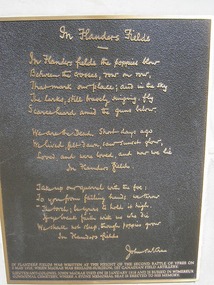
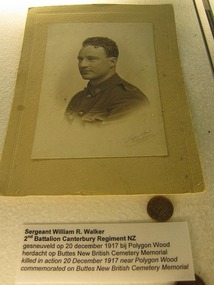

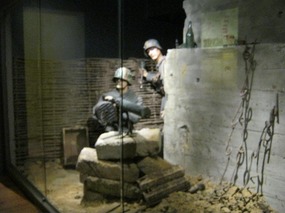
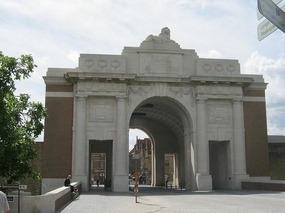







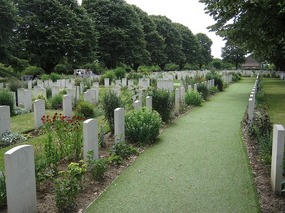
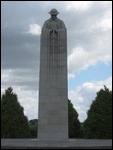
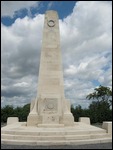
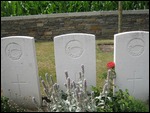
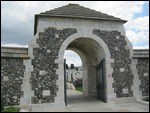
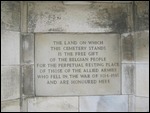
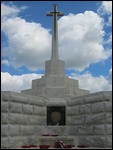
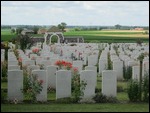
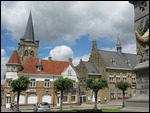
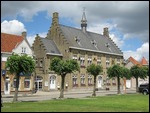
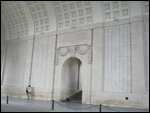
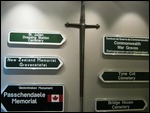
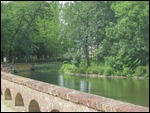
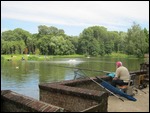
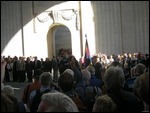
Ailsa
2010-07-20
My great uncle is buried at Bailleuil, about 30 min from Ypres over the border, it was more emotional than i'd expected when we found him. Re the lack of epitaphs on NZ graves - we have letters from the Aust. army re Pete's relative in WW1, all families were invited to put something on the graves but in his case the letter back says they couldn't afford it as they were poor farmers. Sad I think.